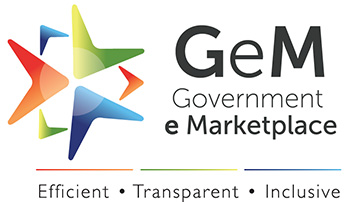Aims and Scope
The Journal of Economic and Taxonomic Botany
(JETB) is a peer reviewed, quarterly, international journal, which aims to
disseminate the knowledge and research carried out in the fields of Economic
Botany, Ethnobotany, Ethnopharmacology, Plant Geography, and Taxonomic Botany
including Floristics and Revisions.
Special issues will be published on specific,
contemporary themes thus offering scope for informing scientists of recent
developments and advances in the fields listed above.
Manuscripts
JETB features the
following categories of articles.
• Synthetic
reviews (not more than 10000 words, including the list of references, say a
maximum of 60, 5 figures and 5 tables)
• Original
research paper (not exceeding 6000 words, including a list of references, 5
figures, and 5 tables)
• Monographs
• Short Communications (2000–2500 words,
including list of references, 1–2 tables and 1–2 figures)
• Book
reviews (1500–2000 words)
Procedure followed at JETB Office
• An
immediate electronic acknowledgement of the receipt of the MS will be
communicated to the corresponding author.
• Manuscripts
received will be screened by the Managing Editor for an overall fit with the
aims and scope of JETB, which will then be forwarded to the Chief Editor for
further evaluation.
• Preliminary
fit will be assessed considering (i) the theme and contents of the submitted
manuscript and (ii) layout, whether the instructions have been followed
meticulously. [Those submissions not qualifying the above requirement will not
be further processed and simply informed of their rejection to the
corresponding authors’.]
• In
case the MS is satisfactory, it will be assigned to one of the members of the
Editorial Board, who will handle the paper further on and refer the paper for
review by 2–3 experts in the identified field.
• The
manuscript may be accepted as such, or accepted with either major or minor
revisions, or out rightly rejected in the light of comments of the external
reviewers (2–3) and the Subject Editor (Editorial Board member).
• The
corresponding author will be informed about the decision of the Subject Editor
via email by the Managing Editor.
• Generally,
the decision – acceptance or rejection will be intimated in
eight– ten weeks from the date of receipt of submission of the MS.
Author responsibilities
• Author(s)
hold(s) the fullest responsibility to provide authentic information and take
fullest care of copyright matters.
• Author(s)
should refer to the AI Policy under the Ethical Policies at www.scientificpubonline.com
• Any
matter (textual or illustrative) extracted from earlier publications’
appropriate citation should be included.
• In the event of any conflict,
manipulation of image or data, and/or plagiarism, the author(s) remains
responsible.
• Please
note that the provisionally accepted papers will be subject to plagiarism
checks and in the instance of plagiarism detection, the acceptance will be
cancelled and the paper will be rejected.
• Please
refer to the AI Policy section in or Ethical Policies at www.scientificpubonline.com
• Corrections
on the proof should be restricted to printer’s errors only and no substantial
changes should be made. No change in the names of the authors is permissible at
the proof stage. If there are valid reasons for such a change, after acceptance
of paper, the permission of the Editor must be sought.
• For
consistency in binomials, authors should meticulously check and strictly adhere
to www.theplantlist.org.
• For
new occurrence reports, author(s) need to add a short discussion on what the
new occurrence indicates in terms of habitat to facilitate the entry of a new
plant.
Copyright and Plagiarism
• Copyright
information needs to be provided by the authors. The author(s) will have to
send a completely filled and signed ‘Copyright Agreement Form’ along with the
‘Manuscript Submission Form’ [can be extracted from the website], without which
the paper will not be accepted.
• JETB
has zero tolerance against plagiarism. If plagiarism is detected, the published
paper will be withdrawn and the crime will be clearly mentioned in the next
issue, with a copy marked to the mother institution where the author(s) worked
or are working.
• The
manuscripts in no condition should be based on the subject matter of a
predatory journal(s) nor there should be any citations of articles from
predatory journal(s).
• For
details on the Copyright and Plagiariasm author(s) should refer to the Ethical
Policies mentioned on the Scientific Publishers web page www.scientificpubonline.com
Cover art
• Authors
are invited to submit high-resolutions images for consideration for
reproduction on the cover. Cover art is chosen on aesthetic appeal and
scientific interest. An image does not need to have relevance to an article
published, but should be related to it. Authors will need to confirm full
permission to publish both online and in print. The Editors may crop, rotate or
otherwise adjust images to fit the cover.
• Image
requirements: The artwork should consist of a single image of at least 300
dpi for colour images and 600 dpi for B&W images to be sent as TIF,
EPS, PCX, JPG format files.
Formatting
Final manuscripts should be
• typeset
in Cambria, size 11, fonts in English language with 1.5 interline spacing
• following
British spellings and grammar
• with
no footnotes
• Short
communications carry no abstract. The ‘Introduction’ section should provide a
brief account of all the details abstractly. ‘Results and Discussion’ section
should be merged as one. References may be restricted to a maximum of 15 whereas tables and
figures to one or two each’.
• Abbreviations
used in the text must be explained at the first instance of citation. Standard
and popular abbreviations (e.g., mg, g, km, m) are exempt.
• Headings
and subheadings (throughout the paper) are to be provided in the following
manner
1. Sectional heading (level 1) (Bold, minimal
capitalization)
1.1
Sectional heading (level 2) (No bold, italicized, minimal capitalization)
1.1.1
Sectional heading (level 3) (No bold, italicized, minimal capitalization)
The manuscript should have the following
headings in the given order (except Short communications).
• Title:
Should be clear, precise and set in capital
letters. Italicize binomials. Below the title include the name(s) of the
author(s) along with their complete affiliation(s). In case multiple authors
have different affiliations, they should be identified with superscripts with
complete postal addresses. The corresponding author should be marked with an
asterisk, and the current and valid email address should be provided.
• Abstract:
An abstract of 100–150 words should be included
mentioning a concise background of the study done, followed by its purpose, key
results, and the conclusion(s) along with potential applications of the work
described. It should be set in a single paragraph. No references cited in this
section.
• Keywords:
Four–five keywords should be included pointedly
referring to the study. Each keyword should begin with a capital letter and
separated by a semi colon. See that no term used in the title is repeated in
the keywords.
• Introduction:
This section should provide a clear context to the
reader. Therefore, it should refer to the need for the study done, the study
area considered and the purpose of the study followed by a set of well-defined,
pointed objectives of the study. The goal can be rationalized with a brief
relevant review of earlier work and thus justifying it. Use binomials only
throughout (refer to www.theplantlist.org) and avoid common names. Set
binomials in Italics. At the first instance in the text (besides the title and the
abstract) mention the name of the plant(s) in full and in subsequent reference
shorten the generic name to its first letter followed by a full stop. In case a
sentence starts with a binomial, then do not contract the generic name: See
details under References for in-text citations style.
• Materials
and Methods: This is the substantive part of the
paper. Include every detail of the landscape and other pertinent details (e.g.,
weather, sampling months, rainfall, pedology) and cite appropriate consulted
references. For weather details do not include exhaustive tables or graphs:
include minimal details based on seasons. A clear and complete description of
the techniques used should be provided, without sacrificing any detail. Create
a new subsection of statistical methods used in sampling and analysis and
explain them in fullest detail, wherever applicable. Provide details of
software used to analyze the data.
• Results:
This section should only refer to the findings made
in the study. Create figures, tables, and graphics as appropriate. No
inferences or discussion should occur in this section.
• Discussion:
It should include a thorough and comprehensive
analysis and synthesis of the results obtained. Be brief and pointed. No
circumambulation is preferred.
• Acknowledgements:
Use straightforward prose to communicate the
acknowledgement in as brief a text as possible. Use active voice and refer to
the person by name only; avoid titles and unnecessary words and terms. It is to
be made at the end of the paper not exceeding 4–5 lines.
• Tables
and Figures: Tables and figures should be
appropriately numbered and referred in sequence. Every table and/or figure must
include a caption clearly indicating its purpose. Maps should indicate the
study area for which it has been used. They should be geo-coordinated.
References to the maps (cited as Figures) should be included wherever
applicable. Send all figures in high-resolution images (300 dpi for colour
images, 600 dpi for B&W images) in TIF, EPS, PCX, JPG format files.
• References
In-text
citations
References
with-in the text should be given as shown in example: ‘(Sharma, 2011)’. For two
author citation the reference should be cited as: ‘(Singh & Pandey, 2012)’.
Multiple references should be separated by a semi-colon and arranged
chronologically, ‘(Sharma, 2002; Patel, 2005; Singh, 2011)’. For three or more
authors, use ‘et al.’ after the first author referred by the surname.
End
list of citations
In
the end list, all cited references should be arranged in alphabetical order and
multiple references for the same author should be cited chronologically.
Following is the style of references:
Journal
articles
Gupta,
A.K. 1976. Flora of Siddhi district Ethnobotany 234: 114–121.
Singh,
T. & Pandey, S.B. 2000. Ethnomedicinal use of Terminalia species Indian
Medicinal Plants 8: 74–80.
Kumar,
D., Kumar, A. & Om Prakash 2012. Potential antifertility agents from
plants: a comprehensive review
Journalof
Ethnopharmacology 140: 1–32.
Articles
accepted, inpress
Singh,
S.B. & Rawat, A.K. 2011. Ethnopharmacological use of Acacia species
in Western India Indian Medicinal Plants (in press).
Chaptersfrombooks
Brown,
B. & Aaron, M. 2001. The politics of nature. In: Smith, J. (ed) ‘The rise
of modern genomics’ 3rd ed Wiley New York 234–295.
Books
Bremer,
K. 1994. Astreaceae: Cladisticsand Classification. Timber Press,
Portland, Oregon 234–298.
Conferenceproceedings
Chaudhury,
K. 2008. The effect of climate on populations of Lepidoptera infesting oak
stands in Garhwal Himalaya, 97–99. In D. Lemerle & A.R. Leys [eds.], Proceedings
of the 7th Asian Conference of Syliviculturists Sylvicuuture Asia Bangkok.
Thesis
Sharma,
J.P. 2000. Ecology and factors affecting distribution of some medicinal plants
of Rajasthan Ph D thesis JNV University Jodhpur India 128 pages.
Websites
The
Biological Diversity Act, 2002 (2008) http://nbaindia.org/text/12//TheBiological
DiversityAct2002.html (accessed on 10 February 2016).
Publication
• Names
of potential reviewers: Supply names, institutional
addresses, and current email IDs of three preferred and non-preferred reviewers
(if any).
• Charges:
We publish high quality articles and research work
in the multidisciplinary field of science. Our peer review process regulates
the quality of every article to ensure it complies with our publishing
standards. In order to cover our handling, processing and production expenses,
a nominal processing fee called Article Processing Charges (APC) is charged on
every accepted submission. This fee also accommodates efforts put into tasks
such as reviewing, editing, proofreading, quality check, typesetting, web maintenance,
plagiarism check, DOI etc. An APC of INR 1000 per page is applicable which
includes all the above born by the publishers.
• Reprints:
The corresponding author will receive a PDF of the
published paper via email.
Address and other contact details
5A New Pali Road, PO Box 91, Jodhpur 342 001
India |
telephone: +91 291 2433323/
2624154 | mob: 9829989666 |
email: info@scientificpub.com |
editorial@scientificpub.com





